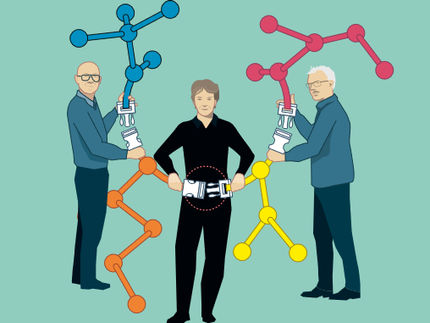Chemists use the blockchain to simulate over 4 billion chemical reactions essential to the origins of life
“If you asked me two years ago, I’d be thinking we’d need years for this type of work”
Cryptocurrency is usually “mined” through the blockchain by asking a computer to perform a complicated mathematical problem in exchange for tokens of cryptocurrency. But in research appearing in the journal Chem on January 24, a team of chemists have repurposed this process, asking computers to instead generate the largest network ever created of chemical reactions which may have given rise to prebiotic molecules on early Earth.
This work indicates that at least some primitive forms of metabolism might have emerged without the involvement of enzymes, and it shows the potential to use blockchain to solve problems outside the financial sector that would otherwise require the use of expensive, hard to access supercomputers.
“At this point we can say we exhaustively looked for every possible combination of chemical reactivity that scientists believe to had been operative on primitive Earth,” says senior author Bartosz A. Grzybowski of the Korea Institute for Basic Science and the Polish Academy of Sciences.
To generate this network, the researchers chose a set of starting molecules likely present on early Earth, including water, methane, and ammonia, and set rules about which reactions could occur between different types of molecules. They then translated this information into a language understandable by computers and used the blockchain to calculate which reactions would occur over multiple expansions of a giant reaction network.
“The computer takes the primordial molecules and the accepted prebiotic chemistries. We coded it into the machine, and then we released it onto the world,” says Grzybowski.
Grzybowski’s team worked with chemists and computer-specialists at Allchemy, a company that uses AI for chemical synthesis planning, to generate the network using Golem, a platform that orchestrates portions of the calculations over hundreds of computers across the world, which receive cryptocurrency in exchange for computing time.
The resulting network, termed NOEL for the Network of Early Life, started off with over 11 billion reactions, which the team narrowed down to 4.9 billion plausible reactions. NOEL contains parts of well-known metabolic pathways like glycolysis, close mimics of the Krebs cycle, which organisms use to generate energy, and syntheses of 128 simple biotic molecules like sugars and amino acids.
Curiously, of the 4.9 billion reactions generated, only hundreds of reaction cycles could be called “self-replicating,” which means that the molecules produce additional copies of themselves. Self-replication has been postulated to be central to the emergence of life, but the vast majority of its known manifestations require complex macromolecules like enzymes.
“Our results mean that with only small molecules present, self-amplification is a rare event. I don’t think that this type of self-replication was operative on primitive earth, before larger molecular structures were somehow formed,” says Grzybowski. “We see emergence of primitive metabolism, but we don’t see self-replication, so maybe self-replication appeared later in evolution.”
“If you asked me two years ago, I’d be thinking we’d need years for this type of work,” says Grzybowski. “But for a fraction of the cost, in two or three months, we finished a task of 10 billion reactions, 100k times bigger than we did previously.”
This work not only advances what we know about early prebiotic chemistry, but it also demonstrates how science can be made more accessible to researchers at smaller universities and institutions.
“Our system of education is based on elite universities mostly in the western world. It’s very hard for the developing world to even compete with these universities because they don’t have access to supercomputers,” says Grzybowski. “But if you can distribute computing in this way for a fraction of the cost, you can give other people opportunities to play.”
While the network generated in this work was performed on hundreds of computers around the world, Grzybowski suggests that this method can be used at institutions without having to pay out cryptocurrency tokens to the computers performing the calculations.
“With a platform like Golem you can connect your institution’s network and harness the entire idle power of its computers to perform calculations,” says Grzybowski. “You could create this computing infrastructure without any capital expenditure.”
Grzybowski hopes that repurposing the blockchain in this way can revolutionize the way we perform large scale calculations across the world and change how we see the value of cryptocurrency.
“I hope people in computer science can figure out how can we tokenize cryptocurrencies in some way that can benefit global science,” says Grzybowski. “Maybe society could be happier about using cryptocurrencies, if you could tell people that in the process we could discover new laws of biology or some new cancer drug,” says Grzybowski.



























































